Optical Tube Assembly of AstroMaster 114EQ
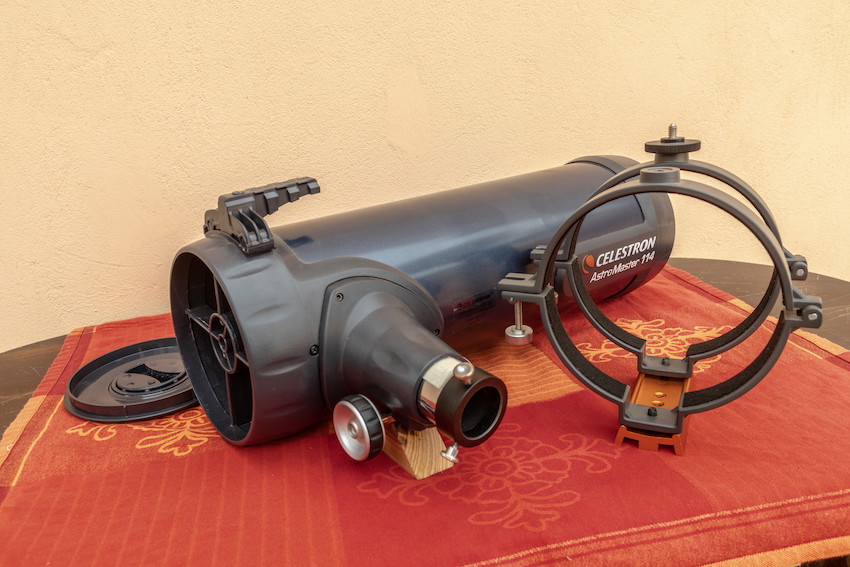
The Celestron AstroMaster 114EQ is supposedly a 114-mm-aperture Newtonian reflector with a focal length of 1,000 mm. This focal length specification itself should immediately raise some eyebrows, as the length of the optical tube of the telescope (measures 395mm) is obviously way too short to accommodate such a focal length. Typically, the focal length of Newtonians are somewhat close to the actual tube length of the telescope.
So, what’s going on?
Well, the AstroMaster 114EQ isn’t actually a Newtonian. It’s a Bird-Jones (or Jones-Bird, depending on who you ask).
Bird-Jones Design: Why I Don’t Like It?
As originally designed by Bird and Jones, this telescope optical design uses a spherical primary mirror (unlike a true Newtonian that uses parabolic primary mirror) with a corrector lens just before the secondary mirror. True Newtonian design doesn’t make use of a corrector lens at all.
This Bird-Jones design allows for the secondary mirror to be shrunk down, and the primary mirror can take the shape of a sphere that is easy and cheap to make. The introduction of the corrector lens in the Bird-Jones design also results in a long focal ratio telescope that is stout and stubby with next to no coma.
At the time the Bird-Jones was designed, eyepieces were simple and coma correctors were nonexistent. So in order to achieve sharp images, focal ratios had to be on the long side.
But today, even the cheap Kellner eyepieces supplied with many entry-level telescopes work well enough with a relatively short focal ratio telescope. They would’ve amazed a 1950s amateur with their quality.
So today, the Bird-Jones design is outdated and no longer needed.
Furthermore, Celestron didn’t even bother to execute the Bird-Jones design correctly.
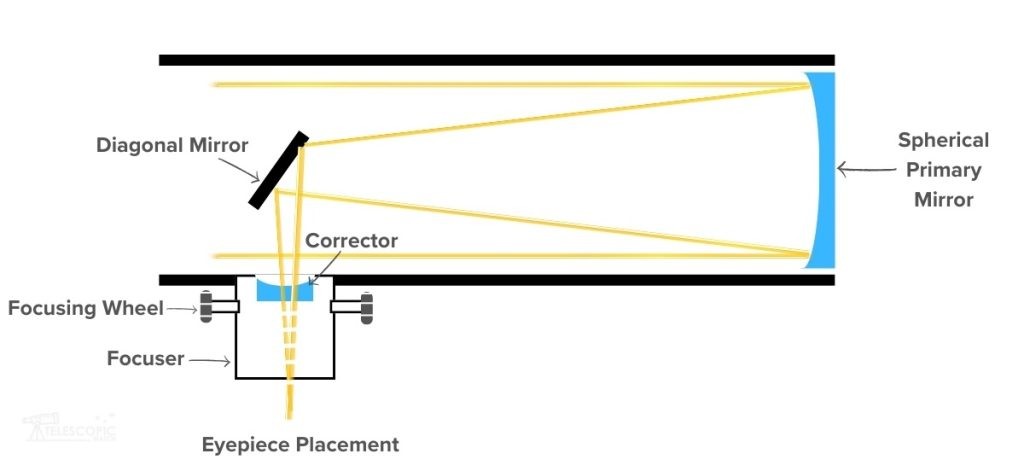
Celestron’s Bird-Jones design places the corrector lens inside the focuser, as shown in the above picture. This causes two problems.
- It means that the spacing between the corrector and the primary mirror is not fixed unlike the original Bird-Jones design. Instead, the spacing varies when focuser is racked in/out depending on what eyepiece you’re using and also whether you’re nearsighted or farsighted. Thus, the corrector lens’ purpose isn’t always being fulfilled correctly.
- The corrector can’t easily be removed, which is required to precisely collimate the telescope. Perfect collimation is a necessity to achieve sharp images.
The problems don’t end here, though.
The correctors in these scopes are incredibly cheaply made and aren’t remotely close to the right shape. These are glorified cheap Barlow lenses. As a result, the 114EQ cannot achieve decent images even when well-collimated, which itself is hard to do as I stated before.
The Problem of Plastic Castings
Moving on to the mechanical aspects of the OTA, we come to another problem: the plastic castings.
The giant casting with the AstroMaster logo that protrudes nearly halfway along the tube, as well as the area around the focuser. This means that I cannot slide the tube in its rings to achieve balance on the declination axis in most situations. This strains the mount and is a nuisance while observing, as I will always have to tighten the declination axis.
Problems In Other OTA Design Features
The focuser on the Celestron AstroMaster 114EQ is a modest and functional 1.25” rack-and-pinion, mostly made of plastic, apart from the knobs.
The finderscope is a standard StarPointer red-dot finder. Though until recently, most AstroMaster scopes I’ve had my hands on had an obnoxious and often-faulty built-in red-dot finder.
The Celestron AstroMaster 114EQ comes with standard tube rings and a very short Vixen dovetail, which would allow us to put the scope on a different mount, if we want to. But I see it as the equivalent of putting premium dipping sauce on McNuggets—the prime ingredient is still cheap and the secondary ingredient is never going to compensate for that.
One of the rings has a captive ¼ 20 knob, so I can piggyback a DSLR camera on top. But this often further wreck the balance, and is too much for the mount to handle.
The Bad Eyepieces Experience
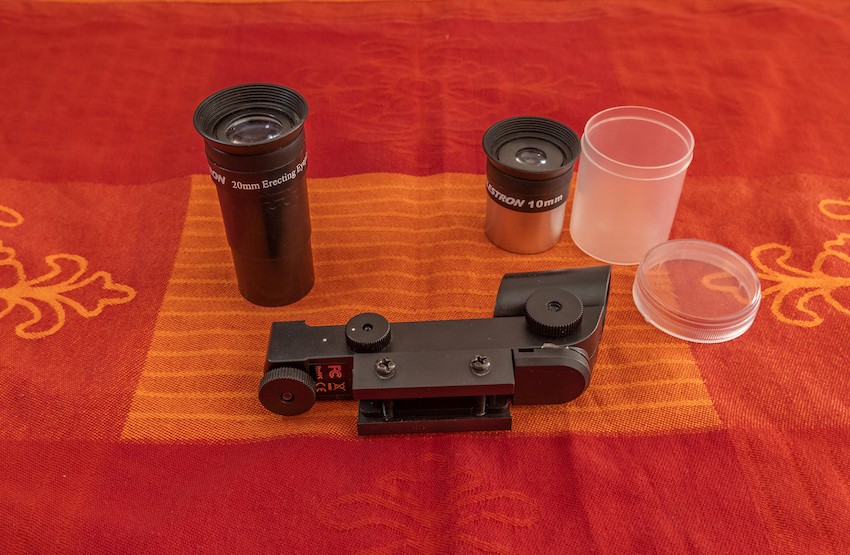
The AstroMaster “Newtonians” all come with a 20 mm “erecting” eyepiece for low power magnification, just like in the case of the infamous Celestron PowerSeekers series.
The 20mm eyepiece is almost entirely plastic, has a narrow field of view, and isn’t sharp in the slightest. Celestron includes this eyepiece solely so they can sell it at nature and science stores under the premise of it being capable of terrestrial viewing.
The other eyepiece included with all AstroMaster telescopes is a 10 mm Kellner. It works fine in most other telescopes I’ve used the same eyepiece with. But the AstroMaster 114EQ is, of course, incapable of delivering a sharp image with it.
The CG3 Mount
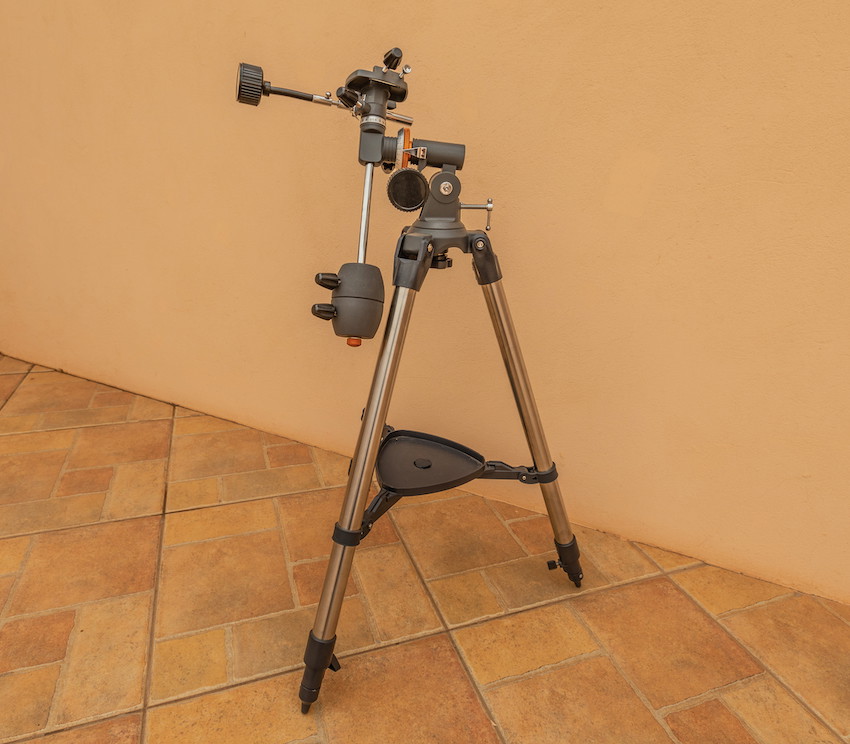
The mount Celestron supplies with the AstroMaster EQ telescope is known as the CG-3, though some literature refers to it as a CG-2. Celestron’s CG numbering system is confusing to me. I’m of the opinion that they should ditch it and stick with the EQ1-8 system that other companies use.
The CG-3/CG-2 is of the run-of-the-mill, cheap, and German equatorial design, with tiny, useless setting circles that are little more than decoration. It has 1.25” tubular steel legs and lots of plastic castings on the tripod.
The CG-3 has flexible slow-motion cables for both axes, fine adjustments in altitude, and an azimuth for accurate polar alignment. You can also equip the mount with Celestron’s logic drive for hands-free tracking.
The Balancing Problem
German equatorial mounts can often place the eyepiece of a Newtonian in an awkward position, and we must rotate the tube in its rings to reposition it somewhere more comfortable. Normally, when doing this I’d have to worry about accidentally sliding the tube forward or backward when the rings are loosened, and thus possibly ruining the declination axis balance. But since the optical tube can’t really slide far in either direction and the balance is so messed up anyway, I don’t consider this to be much of an issue to start with.
Were it not for the balance issues, the CG-3 would actually make a fairly adequate mount for the Celestron Astromaster 114EQ. However, given that the telescope cannot actually balance on the declination axis, it is nearly impossible to aim accurately.
Alternative Recommendations
At the same price as the AstroMaster 114EQ, there are a lot of good scopes. A few we’ve selected include:
- The Sky-Watcher Heritage 130P has significantly more aperture, better optics, better accessories and an easy-to-use Dobsonian mount, but with a collapsible tube.
For additional options that might be right for you, check out our Telescope Rankings page and Best Telescopes guide.
Astrophotography
The optics in the AstroMaster 114EQ are so bad that you can completely forget about taking decent pictures with it. Even if this were not the case, a camera, whether directly coupled or piggybacked, would ruin the balance and strain the CG-3 mount too much.
What can you see with the Celestron Astromaster 114EQ?
If we manage to get it collimated, the AstroMaster 114EQ can give us fairly nice views of the Moon.
- Venus’ phases can be seen, while Mercury’s is a little more difficult.
- A dark spot or two on Mars, along with an ice cap, is possible when the planet is close to Earth.
- Jupiter’s moons and cloud belts are easy, while the polar zones and Great Red Spot elude us.
- Saturn’s rings and a few moons can be spotted.
- Uranus and Neptune are fuzzy, star-like dots, assuming we manage to locate them in the first place.
Deep-sky objects are a little more forgiving, though the included 20mm eyepiece make it feel a bit claustrophobic when viewing them.
- Open star clusters like the Double Cluster are easy, while globular clusters are unresolvable fuzzy smudges.
- You might have difficulty distinguishing many of the smaller planetary nebulae from stars, though the Ring and Dumbbell are easy.
- Galaxies have detail-less smudges even from dark skies, apart from M82 and its dust lanes. A few emission nebulae like Orion and the Lagoon are mildly intriguing, if washed out easily by light pollution.


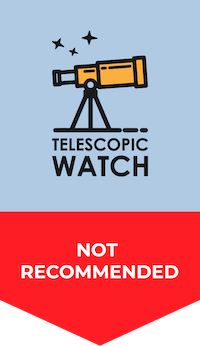

what entry-level telescope that can take photos do you recommend-and thanks for saving me from buying the 114eq.
For astrophotography you will probably need a >$1000 budget. For visual use check out our guide: https://telescopicwatch.com/all-product-guides/
I’m very disappointed in mine. My first was a Gskyer. Cheapest one they have and it outperforms the 114 EQ
hands down .
Hello,
I’m looking for a telescope to look at planets and moons. Don’t really care about taking pictures of them. Just night time observation. I have done research and now I’m even more confused then when I started. Any help would be greatly appreciated
Thanks
Holly
Check out our guide for a list of recommendations for every price range. https://telescopicwatch.com/all-product-guides/
Unfortunately I brought this in january and I wonder, Is this tripod useful for another mount and OTA? I plan to do Lunar astrophotography with a DSLR. Thanks.
I actually love my Celestron 114. Have had very good luck with it. I have been able to take some amazing detailed photos of saturn and it’s rings. I plan to upgrade next year and let my son use this one. Over all I’m satisfied with the product.
My daughter received this as a gift last year and I cannot get it to focus at all…I think I was on tonight’s full moon because my image was white (ish) but just a gigantic blur. Any advice?
You might need to rack the focuser in/out and make sure you have an eyepiece in
My stepdaughter got one of these several years ago (before I was around) and never got it set up right. I’ve offered to see what I can do, but I can’t even get the finderscope and eyepiece to get even part of the moon in both at the same time. There just isn’t enough adjustment in the finderscope. I suspect something wasn’t put together properly from the factory. Any suggestions other than trying to sell it to some other sucker?
Yeah well I paid like $99 brand new for this scope and it works fairly well. It worked far better after I collimated it.
I get it…it’s not a viable tool for deep space astrophotography. My daughter won this at an academic contest a few years ago. Is it decent enough to photograph the moon and possibly other planets? Or would it make for poor quality images? I’d like to know before buying any accessories and adapters for my camera. I don’t have a $1000 budget for doing this at this time. Thanks!
Not worth the bother IMO beyond phone snapshots.
Thanks…then I won’t bother spending any money on it. I’d rather save up and wait for something better. I’ll also check out the link you’ve been telling other’s about.
Would you rate the tripod as worth a damn? I bought a 2nd hand skywatcher 120mm refractor scope without a tripod & thought maybe scooping one of these cheaply just to plunder the tripod might be viable.
The EQ2 mount included with the scope is decently made but it can hardly support the 114EQ, let alone a 120mm refractor.
I’ve been impressed by Celestron’s support of their original products- my old C8 Schmidt-Cassegrain was a landmark design and made in the US. However not that many will spend anywhere near that for a first scope, so like everyone else they have to market inexpensive stuff like this. I’ve no problem with basic gear but products like this and the Powerseeker 127 have taken the place of the 725 power 60mm department store telescope. Poorly designed and badly made rubbish scopes will do more to kill off a child’s budding interest.
I was asked to help set up a neighbor’s 114EQ and there wasn’t much I could do. This is a really awful scope. I wound up loaning him my old Celestron C4.5 Newtonian and the difference is shocking. The C4.5 was made in the 80s by Vixen in Japan and sold by Celestron. Same aperture as the 114EQ but way better image quality.
Great post! Are there any pespectives that you may be able to divulge in order to justify your last part a small amount further? thanks a lot
Celestron has really cheaped out on their scopes! Poor design and manufacture is ruining their reputation. They most likely chose the cheapest possible optical design they could to save a few pennies! A spherical mirror and cheap barlow in a short focal length scope is the cheapest possible arrangement ( Bird – Jones) .
They should have kept the 114 Newtonian design like the old Tascos – a tried and true newtonian with a spherical mirror that works well.
I think this cheapening indicates a scope made by accountants and not scientists! Cheap , cheap ,cheap.
I had one of these and returned it – it wasnt half as good as my old 114mm Tasco.
Damned shame they are making poor products with poor design just to save a few cents.
This scope completely ruined my opinion of Celestron. I bought it so my kids could get interested in Astronomy. Refractors from now on. These companies do not care about providing a true reflector so we can get our next generations interested. Ridiculous. I will not buy another Celestron product.
Some would say they cash in on the reputation of their higher-end products to sell scopes like these.
For declination balance, there actually is enough space on the vixen dovetail to slide it forward or backward to achieve acceptable balance. And for balance on the ra axis, you simply side the counterweight up or down until it’s balanced. It does get a bit unbalanced with my heavy 32mm Omni plossl, but it is much better than when the dovetail bar was sorta centered on the locking system. For collimation, you can only do a star test unfortunately. I am a user of the 114, the one with the cheaper older red dot sight. I will say that initially, finding objects was difficult, but after I learned its tricks and nuances, finding stuff wasn’t too awful. A nice wide field eyepiece and a 6mm goldline helped a lot.